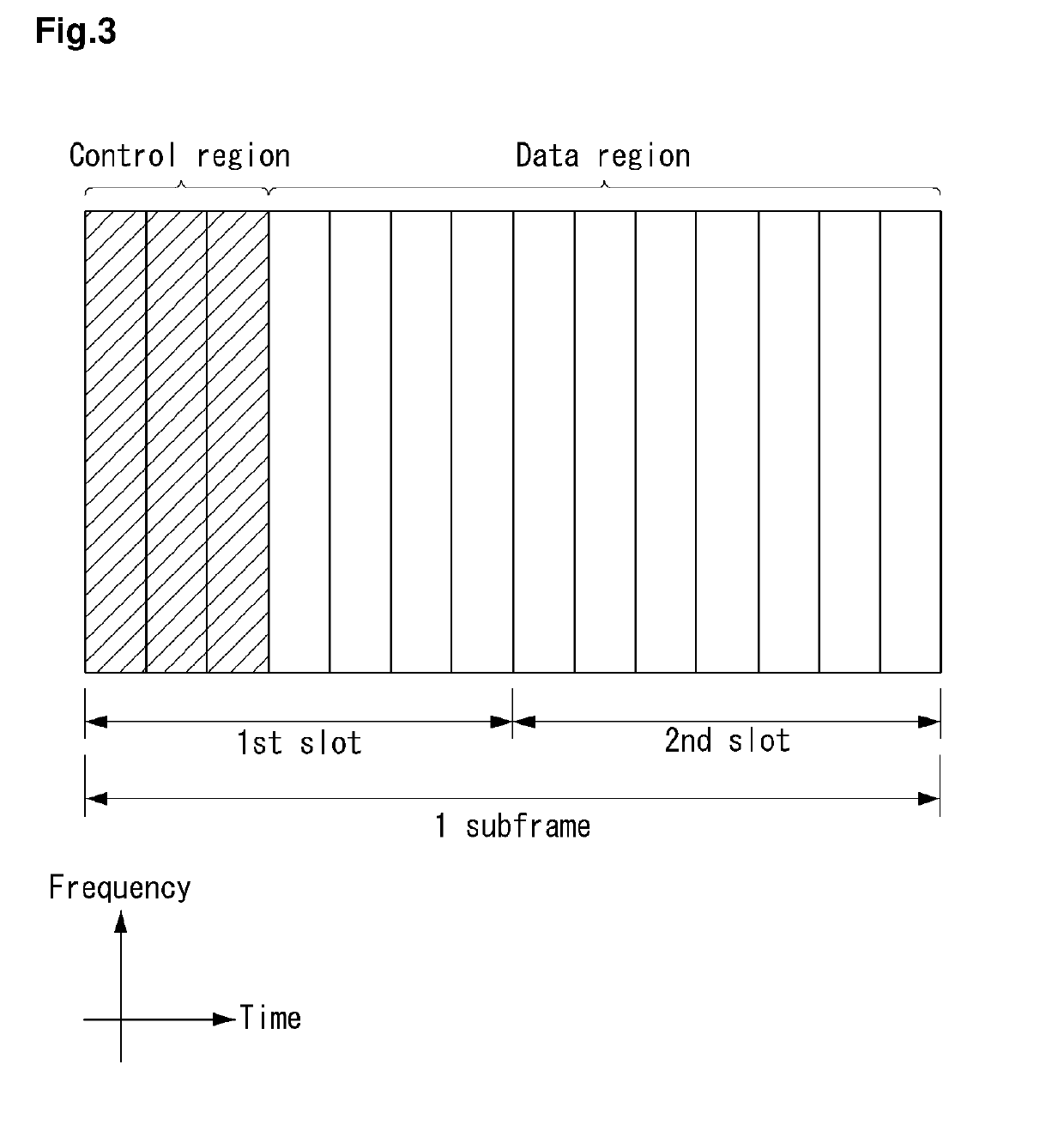Method for transmitting channel state information in wireless communication system, and apparatus therefor
- Summary
- Abstract
- Description
- Claims
- Application Information
AI Technical Summary
Benefits of technology
Problems solved by technology
Method used
Image
Examples
first embodiment
CSI Transmission Method of 2-Step Method (First Embodiment)
[0452]In a next-generation wireless communication system supporting an sTTI, the number of bits transmitted in one sTTI can be reduced through a method of dividing a value transmitted with respect to each piece of channel state information into two steps and transmitting them. That is, a UE may transmit (or feed back) channel state information to a base station using two STTIs. The two STTIs may mean consecutive sTTIs or non-consecutive sTTIs.
[0453]In order to reduce the number of bits transmitted in one sTTI, a UE may transmit a CQI to a base station through 2-step transmission using a grouped CQI index as in FIG. 22.
[0454]FIG. 22 illustrates the indices of CQIs transmitted in 4 bits to which the present invention may be applied. FIG. 22 is only for convenience of description and does not limit the scope of the present invention.
[0455]In FIG. 22, a case where a CQI transmitted by a UE is represented as 16 CQI indices and th...
second embodiment
CSI Transmission Method Through sTTI in System Supporting MIMO Transmission (Second Embodiment)
[0464]In a system supporting multiple input multiple output (MIMO) transmission, a UE performing MIMO transmission may report CSI (e.g., CQI) about a maximum of 2 codewords to a base station.
[0465]In the case of legacy LTE, a UE may configure a CQI for a first codeword (codeword 1) using 4 bits, may configure a CQI for a second codeword (codeword 2) using 3 bits indicating a differential value, and may report a total of 7 bits to a base station. In this case, the differential value may mean information indicating only a value that varies in different information (e.g., the second codeword) based on specific information (e.g., the first codeword). In this case, the value of the specific information may be denoted as a reference value or an absolute value.
[0466]In contrast, in a system supporting an sTTI, in order to reduce the number of bits transmitted in one sTTI, a method of performing a...
third embodiment
Method of Configuring sTTI to be Used for Transmission Based on CSI Size (Third Embodiment)
[0477]Furthermore, CSI (e.g., CQI) values having different sizes may be configured to be transmitted in sTTIs of different lengths. That is, a CQI value having a different size may be fed back using an sTTI of a different length. For example, if a CQI value is configured as an absolute value (or reference value) and transmitted (e.g., a CQI configured as 4 bits in FIGS. 23a to 23d) and if a CQI value is configured as a differential value and transmitted (e.g., a CQI configured as 3 bits in FIGS. 23a to 23d), sTTIs of different lengths may be configured.
[0478]More specifically, if a UE divides and transmits each codeword in two STTIs with respect to MIMO transmission, the UE may feed a CQI for a first codeword back as an absolute value or reference value and may feed a CQI for a second codeword as a differential value (i.e., in the case of FIG. 23b). In this case, an sTTI in which an absolute v...
PUM
 Login to View More
Login to View More Abstract
Description
Claims
Application Information
 Login to View More
Login to View More - R&D
- Intellectual Property
- Life Sciences
- Materials
- Tech Scout
- Unparalleled Data Quality
- Higher Quality Content
- 60% Fewer Hallucinations
Browse by: Latest US Patents, China's latest patents, Technical Efficacy Thesaurus, Application Domain, Technology Topic, Popular Technical Reports.
© 2025 PatSnap. All rights reserved.Legal|Privacy policy|Modern Slavery Act Transparency Statement|Sitemap|About US| Contact US: help@patsnap.com



